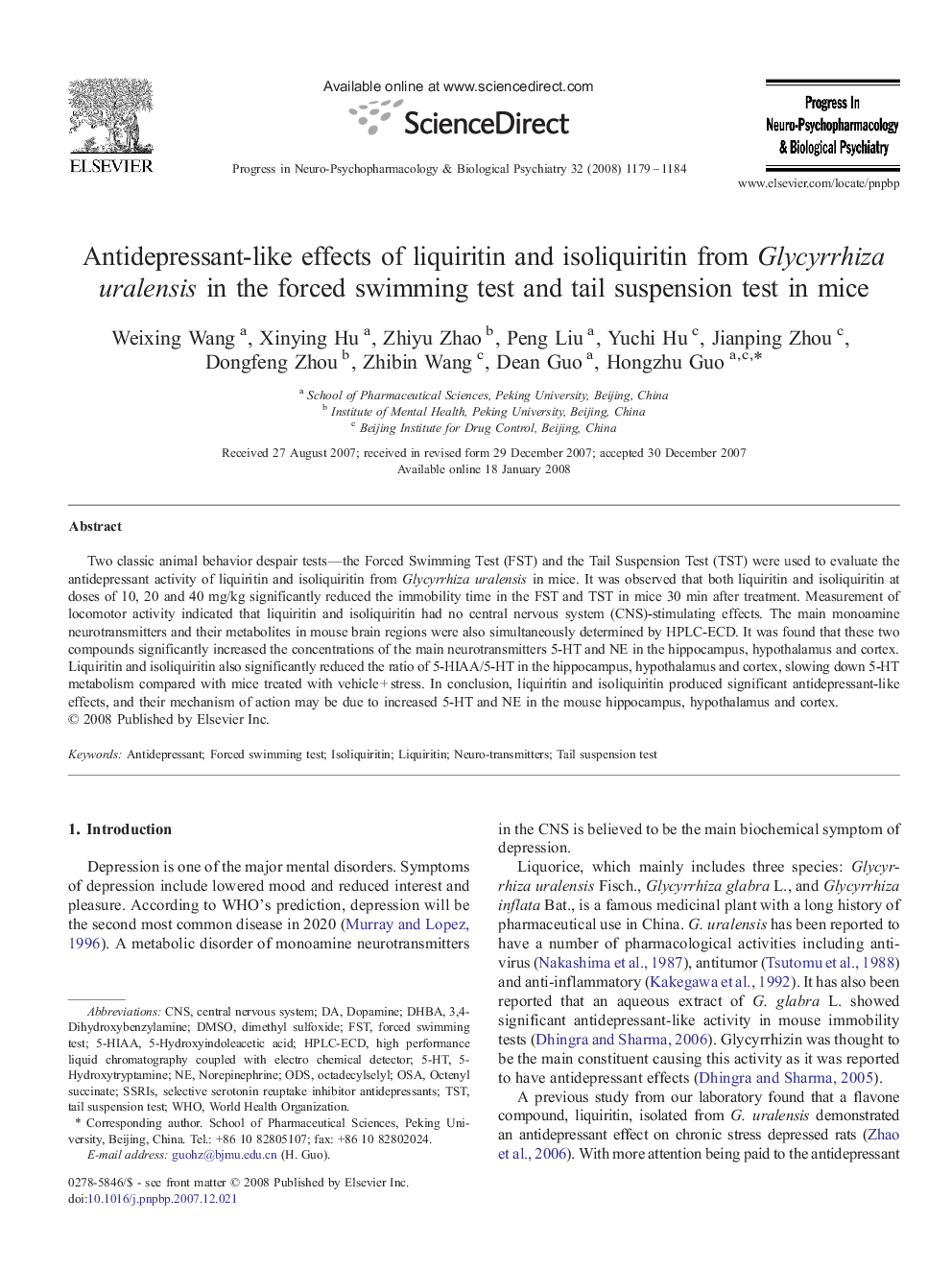| Article ID | Journal | Published Year | Pages | File Type |
|---|---|---|---|---|
| 2566575 | Progress in Neuro-Psychopharmacology and Biological Psychiatry | 2008 | 6 Pages |
Two classic animal behavior despair tests—the Forced Swimming Test (FST) and the Tail Suspension Test (TST) were used to evaluate the antidepressant activity of liquiritin and isoliquiritin from Glycyrrhiza uralensis in mice. It was observed that both liquiritin and isoliquiritin at doses of 10, 20 and 40 mg/kg significantly reduced the immobility time in the FST and TST in mice 30 min after treatment. Measurement of locomotor activity indicated that liquiritin and isoliquiritin had no central nervous system (CNS)-stimulating effects. The main monoamine neurotransmitters and their metabolites in mouse brain regions were also simultaneously determined by HPLC-ECD. It was found that these two compounds significantly increased the concentrations of the main neurotransmitters 5-HT and NE in the hippocampus, hypothalamus and cortex. Liquiritin and isoliquiritin also significantly reduced the ratio of 5-HIAA/5-HT in the hippocampus, hypothalamus and cortex, slowing down 5-HT metabolism compared with mice treated with vehicle + stress. In conclusion, liquiritin and isoliquiritin produced significant antidepressant-like effects, and their mechanism of action may be due to increased 5-HT and NE in the mouse hippocampus, hypothalamus and cortex.
